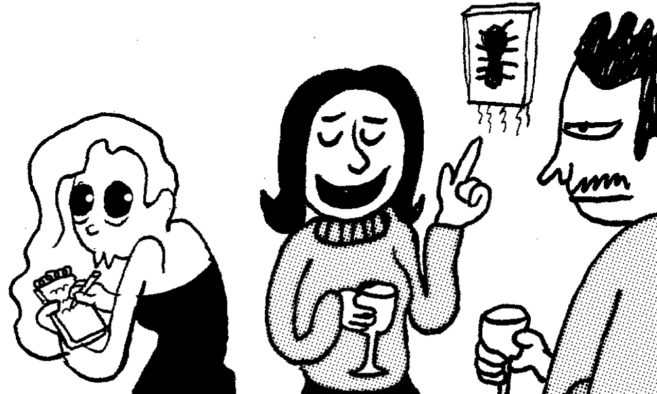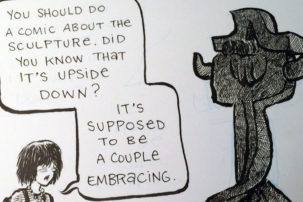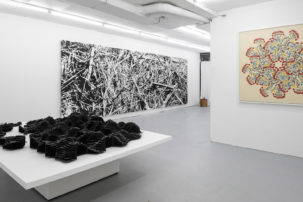Wendy, Master of Art is the third book in artist and cartoonist Walter Scott’s series of graphic novels that follows the beloved fictional artist Wendy through her messy escapades in life, love and the rise to contemporary art stardom. Born from a placemat drawing in 2011, Scott’s Wendy series takes place in a slightly alternative universe, where our protagonist encounters recognizable art-world types, some of whom are depicted as shape-shifters, aliens and other altogether nonhuman beings. In Wendy, Master of Art, Scott takes aim at the MFA program experience with a semiautobiographical tale set in the fictional town of Hell, Ontario.
Scott’s “Wendyverse” is a playful and pointed satire of the North American, mostly Canadian, art scene. With black-and-white line drawings of exaggerated or distilled facial expressions, his comics style is immediately understandable in a way that recalls the manga tradition. Wendy (2014) and Wendy’s Revenge (2016) documented our heroine’s early post-undergraduate days of partying, booze and drugs, as well as her attempts at professional development with artist residencies in “Flojo Island” and Yokohama, Japan. Scott’s third book begins the morning after a wild night of clubbing in Berlin, where Wendy wakes up to an acceptance email from the University of Hell’s MFA program. Several new characters are introduced to the series, including the stereotypical fibres fanatic, the international jet-setter, the self-identified “token dyke” and other angry and insecure individuals. There are also appearances by key members of the Wendyverse, such as Tina, Jeff, Screamo and Sandy, “the girl who has it *all…*consistent mental stability.” Across her time in the program, Wendy grapples with assigned readings of unintelligible academic theory, studiomate drama and teaching her first undergraduate class. For the first time, Wendy has responsibilities as an adult, not only to her students, but also to Xav, a polyamorous artist she becomes involved with, and to her best friend, Winona, an Indigenous multimedia performance artist.

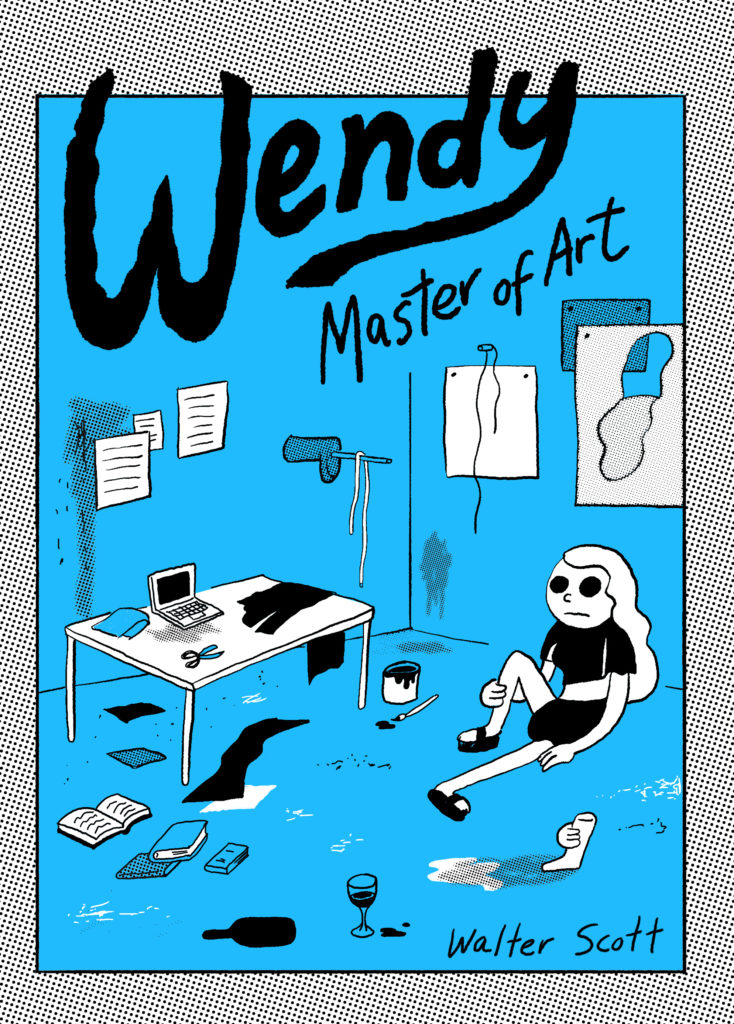
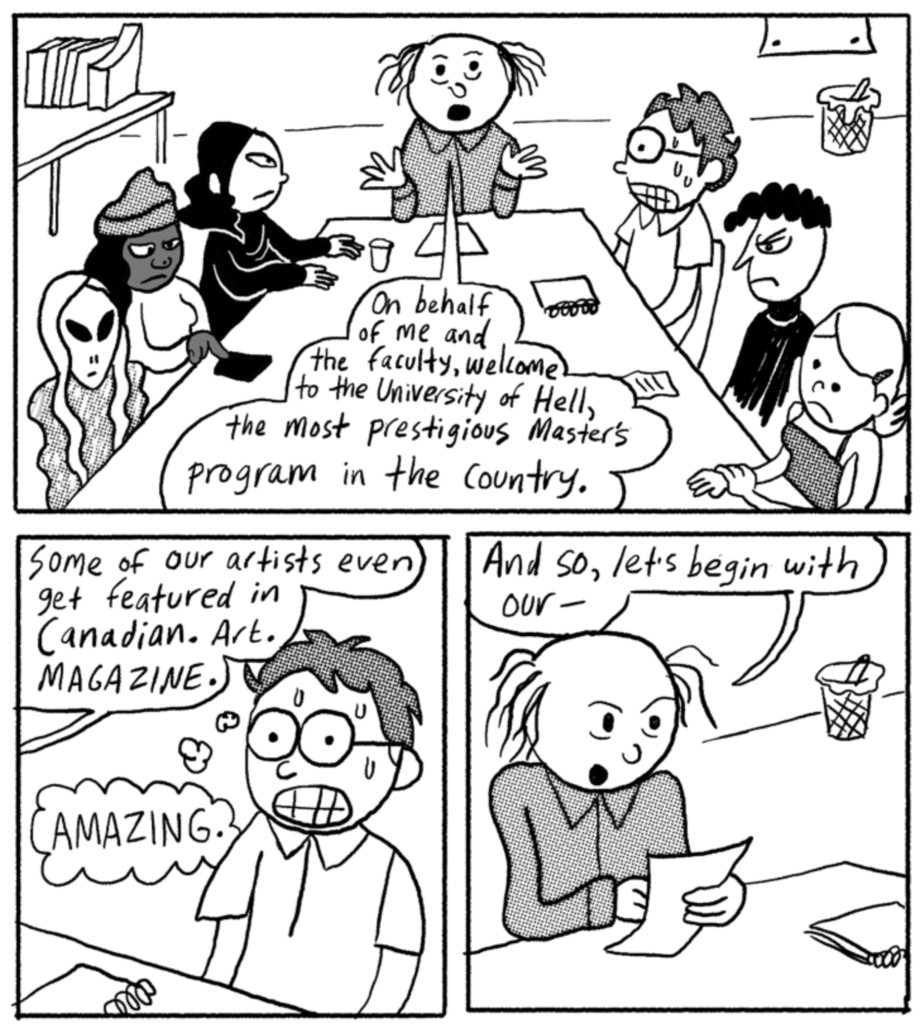
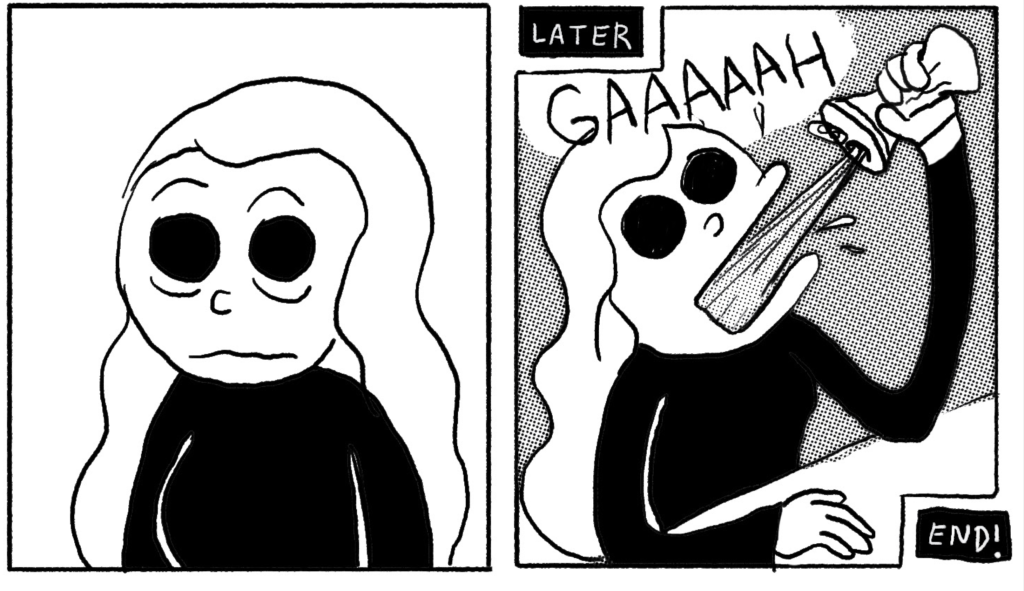 Walter Scott's Wendy, Master of Art. Courtesy Drawn & Quarterly.
Walter Scott's Wendy, Master of Art. Courtesy Drawn & Quarterly.
